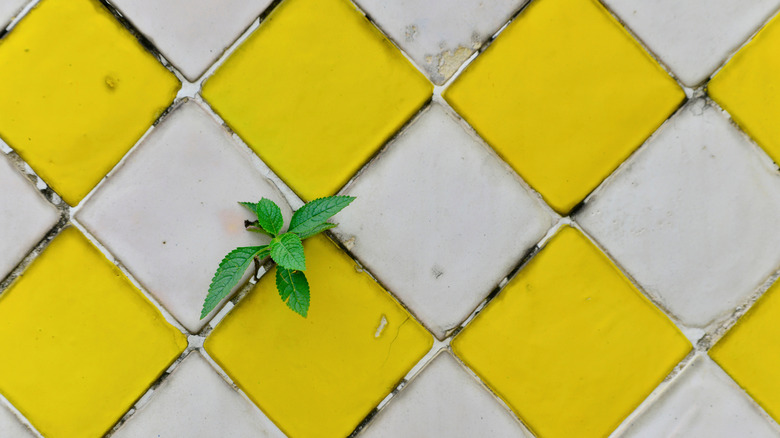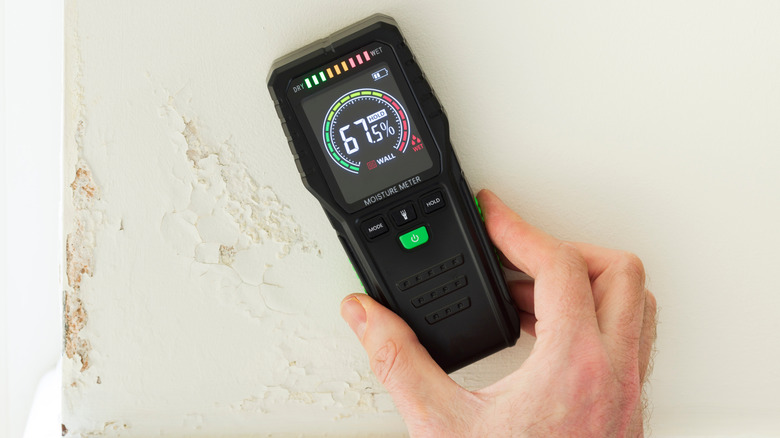What To Do About A Rogue Plant Growing In Your Wall, And What It Means
Even if you love houseplants, seeing a rogue plant growing through a crack in your interior wall can be quite the unwelcome shock. While their resilience is rather impressive, if you find strange weeds or mushrooms growing in your walls, it's likely a sign that you've got a bigger problem at hand. Naturally, your first instinct may be to remove the plant. Some common kitchen essentials, like baking soda, can stop pesky weeds from growing in cracks outside your home. However, when dealing with interior growth, it's better not to touch anything until you can arrange for a building inspector to come and assess the situation.
There are a few different factors that could cause unexpected growth like this. In the case of mushrooms, for example, a buildup of moisture in your walls and a lack of light make the perfect breeding ground for fungi growth. Water damage and mold almost always accompany mushroom growth and must be addressed immediately, as both could be detrimental to your health. For weeds, moisture could be the cause, or you could be dealing with a rather aggressive outdoor plant that's pushed its way in through a crack in your home.
How to take care of plants growing in your walls
When dealing with a buildup of moisture in your walls, you've got more to worry about than just rogue plant growth. When left unattended, this moisture can cause water damage and mold growth as well. If you spot a plant growing from your wall, use a moisture meter to determine whether excess water is to blame. If the reading is 10% or higher, seek professional help. Be sure to check for other signs there's hidden water damage in your home's walls as well. Things like warping, condensation, musty smells, foggy windows, and water stains are all pretty good indicators.
If moisture isn't the problem, you're likely dealing with an aggressive or invasive weed. Plants like English ivy and Japanese knotweed are pretty common examples. Japanese knotweed has particularly strong roots that can penetrate your walls and cause cracks and other damage to your home. Although certain species of ivy are commonly used to cover a home, there are a handful of reasons to reconsider growing English ivy, and its invasive nature is a big one. The plant's roots can creep into existing cracks, worsening them as it grows and eventually breaking through your walls. Additionally, if you do have a moisture problem, a covering of ivy can make it worse. Whether you're dealing with moisture or invasive plants, the underlying issues can be quite serious, which is why it's always best to seek out help from a professional.

